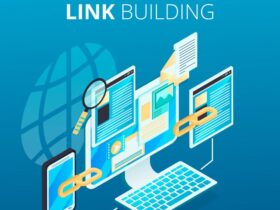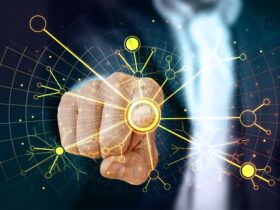There is a lot of work that goes into running an HR department. It is so much more than hiring talent. The teams have to manage the staff and ensure the creation of a healthy work environment.
Some of the tasks can be repetitive, arduous, and time-consuming. Automating such processes with the right technology helps achieve higher efficiency. It also frees up the teams to concentrate on other core activities.
Our article looks at ways technology has changed the face of HR management. Let’s dive into it.
Technology in Recruiting
Think about a normal recruiting process. The department has to come up with job descriptions. They then advertise positions or post them on relevant sites.
The teams receive tons of responses from potential candidates. They must go through each application to find the right candidate. Without a doubt, the sieving process takes a lot of time.

And, there is also the danger of bias coloring the whole process. In the end, the company may end up with a candidate that is not a good fit for the job.
There is help with the right AI recruiting software. Such technologies assist the HR department to reach a wider pool of candidates. They go through online platforms and social media to find potential candidates.
The recruiting software uses algorithms to match candidates to the right position based on job qualifications. It removes the element of bias, whether conscious or unconscious. The teams can also get insights through facial analysis software.
HR managers can ‘read’ the candidate’s nonverbal cues to know what they feel about the company or position. AI recruiting platforms allow for a more diverse and inclusive work environment.
Data-Driven Insights to Guide Decision Making
A major advantage of technology is data-driven insights. Let’s go back to the example of the AI recruiting platforms. As we have stated, there is greater transparency in the hiring process.
This is achievable by removing the common hiring biases. All the teams need to do is ensure it feeds the AI recruiting technologies with the right data. The software will use these to determine the best candidates.
Many HR processes depend on the collection and management of data. Take the example of performance monitoring, feedback collection, and employee reviews. Technology can help streamline such processes and remove human errors.
The use of analytics to manage the data results in better accuracy and reliability. And most important, the time and resource-saving aspect of task automation.
Sentiment analysis with technology helps create a better work environment. The Information will let the team know what needs changing. It can also identify gaps that could impact work performance. HR can step in with training opportunities, better compensation, and other perks.
Technology has also helped with performance management. The department sets the relevant metrics or benchmarks. The software allows for the collection of insights to measure employee performance.
No more reliance on personal assessments which could be quite inaccurate. The removal of subjective feedback means fairness for all. HR managers can give a low assessment if they have a personal dislike for the employee.
Biases can also have a big impact. An otherwise good employee can fail due to the personal issues of the assessor.
Predictive Analytics for Better Planning
Data provides a fantastic tool to plan for the future. Predictive analytics gives HR useful insights to predict future outcomes. Understanding employee trends and patterns for instance is critical.
The HR can know who is likely to leave or even grow in their position. It allows them to take steps to keep talent, boost performance, or chart productivity. Predictive Analytics finds the best candidates by looking at the potential’s profile.
The teams get data from factors like attrition rates, engagement, and growth. They use such to predict the future performance of the employees.
Predictive analytics can also identify gaps within the organization that need filling. And, they can find the right candidate from the existing pool. It provides an opportunity for HR to promote employees. The result is higher morale, lower recruitment costs, and talent recognition from within.
Less Paper, Higher Efficiency, Better Compliance
Walk into an office that still uses manual processes. It can be hard to understand how they operate. The piles of papers and files can intimidate anyone.
Woe unto you if you have to look for specific information from the past. A room full of files can induce fear and desperation in most people. And, let’s not even go into how much time you will need.

The shift from manual to automated processes can induce a culture shock. Now, everything is within easy reach. Searching for a file is as simple as typing in the relevant name onto a search bar. Within seconds you will have a copy on your screen.
Then, there is the data safety aspect. The HR department collects a lot of very sensitive information. A data breach can cause a lot of problems to the organization. Fires or flooding can wipe out years of company data.
Well, HR departments who have adopted technology need not worry about such things. Cloud storage, for instance, provides secure storage. HR teams get access wherever they are.
All the admin needs to do is assign permission levels depending on rank or job requirements. The functionality is a god-send in these days of remote working. Cloud storage helps in regulatory compliance on safe handling and storage of data.
Final Thoughts
HR technologies have changed the face of HR management processes. One of the most significant ways is to improve the hiring process. HR AI recruiting platforms to remove bias, allowing for diversity and inclusivity in the workplace.
The platforms automate tasks resulting in higher efficiency. And, the use of algorithms matches the candidate with the job based on qualifications.
HR technologies help in the collection and analysis of data. These provide data-driven insights that are vital in decision-making. Predictive analytics can help HR make plans for the future. And, replacing manual processes with automation results in higher efficiency and streamlining of workflows.














Leave a Reply